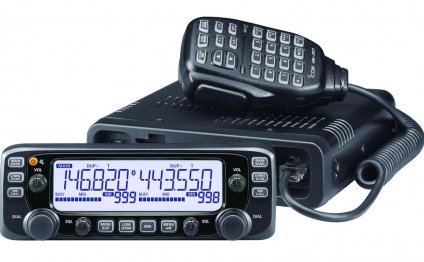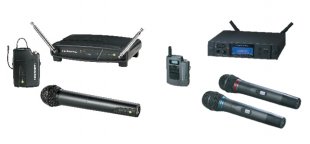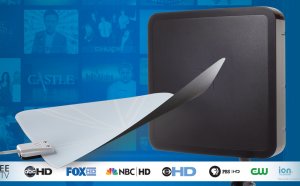
Best VHF UHF antenna
 Answer: the theory that UHF cordless methods are inherently much better than VHF systems hence ISM (2.4 GHz) and UWB (6 GHz) systems are better than VHF and UFH systems is extensive. But while each system does offer benefits, a person is not instantly much better than others, as each system can be tied to wireless laws while the physics of wireless signals. This is certainly true specially now as UHF bands become more crowded and stay mired in regulating doubt. You can find, indeed, several important considerations when selecting between VHF, UHF, ISM, and UWB, including where and exactly how a method should be used, how many systems required, and, definitely, the price.
Answer: the theory that UHF cordless methods are inherently much better than VHF systems hence ISM (2.4 GHz) and UWB (6 GHz) systems are better than VHF and UFH systems is extensive. But while each system does offer benefits, a person is not instantly much better than others, as each system can be tied to wireless laws while the physics of wireless signals. This is certainly true specially now as UHF bands become more crowded and stay mired in regulating doubt. You can find, indeed, several important considerations when selecting between VHF, UHF, ISM, and UWB, including where and exactly how a method should be used, how many systems required, and, definitely, the price.
In terms of traditional analog wireless methods (VHF and UHF), UHF systems usually do not hold any big technical advantage on otherwise comparable VHF systems. However, disturbance considering electrical gear, digital devices, computers and other digital gear is normally lower at UHF frequencies. Simply because sound from all of these sources becomes less intense due to the fact regularity increases. Also, since VHF wavelengths are longer than their UHF counterparts, allowing all of them to travel better distances and pass through obstructions like walls and ceilings, all types of disturbance will travel farther, and so be more difficult, at VHF frequencies. But while UHF methods are less inclined to endure disturbance, cost considerations will favor the application of VHF methods. Preferred Audio-Technica VHF methods are the System 8 and program 9, while popular Audio-Technica UHF systems add the 2000 Series into the 5000 Series.
Furthermore, digital cordless systems (ISM and UWB) have actually benefits throughout the above methods. This also comes during the cost of reduced range when compared to VHF and UHF. Advantages come into have fun with uncompressed (no compander), cleaner audio and, on top of that, reliable inner frequency control. Smartphone, wise home, and conventional cordless microphones are everywhere you appear these days with inner regularity coordination being done within the cordless system, the dedication of coordination is taken off the shoulders regarding the individual. Audio-Technica’s brand new System 10 operates into the ISM frequency range and has now numerous popular receiver choices which range from program 10 Stack-Mount, System 10 Stompbox, System 10 Camera-Mount, and also the System 10 PRO Rack-Mount. Audio-Technica’s SpectraPulse system operates inside UWB frequency range and it is a great choice of high-end set up users.
Extra facets of note whenever choosing your cordless systems tend to be:
- If choosing between UHF or VHF, diversity systems are recommended. Diversity is very important for UHF systems because dropouts as a result of multipath are more troublesome at UHF frequencies.
- If cordless equipment will likely to be found in various towns and cities, ISM and UWB systems’ inner regularity coordination will be able to work around populated electronic TV indicators, which regularly overcome frequencies utilized in UHF systems. Also, VHF methods operating on the unique frequencies in 169-172 MHz range, referred to as traveling frequencies, are an excellent affordable choice (relevant in U.S. and Canada).
- Fixed-frequency (solitary station) methods within the television groups may possibly not be great selections for traveling use. It is because most channels are employed in one single location or any other, and regularity disputes at some point happen. Frequency-agile systems are going to be an improved option.
- UHF systems are good alternatives in circumstances where in actuality the smaller and less-visible antennas are very important, including as soon as the transmitters should be hidden regarding body. UHF are often better if high-performance antennas must be used to increase range.
- ISM and UWB systems are endorse where remote antenna are expected with distances over 100’. Remote antenna or receiver units might be relocated via CAT5e or better cable with RJ45 connections in place of RF cable which can be large and pricey.
To sum up, your best option among VHF, UHF, ISM, and UWB methods is determined by your particular needs, desired features, as well as your RF environment. If you are still uncertain of the best choice for your specific application, please contact the sound possibilities Department for further help.
RELATED VIDEO



Share this Post
Related posts
UHF VHF antenna Reviews
We purchased one of these simple over a year ago from Meritline, and contains worked perfectly ever since then. I happened…
Read MoreUHF VHF Antenna amplifier
Rated 1.0 regarding 5.0 by Tiger7388 PA18 UHF / VHF ANTENNA PRE-AMPLIFIER This amp didn t work the very first time- delivered…
Read More










